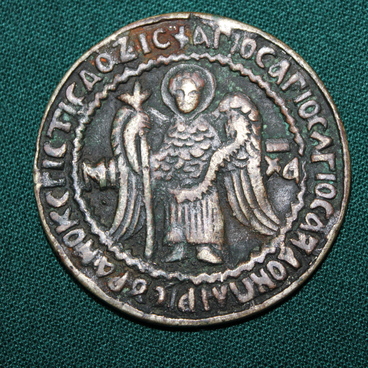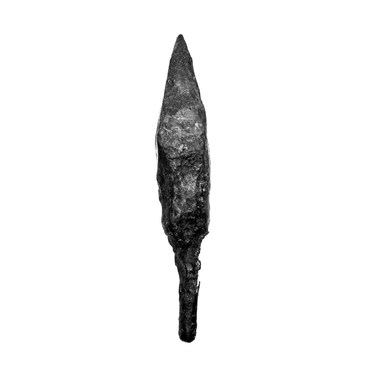A fibula is a garment fastener that was used in Antiquity and the Middle Ages before buttons were invented. Fibulae resembled modern safety pins or brooches and were used to fasten the edges of clothing – cloaks, robes, collars – and as ornaments.
Late La Tène fibulae
Время создания
I–II centuries A.D.
Размер
16,1x2,5 cm
Техника
Bronze, casting
Коллекция
Выставка
2
Открыть в приложении#1
Late La Tène fibulae
#2
#3
Simple fibulae were cast in bronze, while decorative fibulae were made of gold, silver or iron, which was a rare and precious metal in those times, and embellished with precious and semi-precious stones, glass, ceramic beads and engraving.
The bronze fibulae on display are from the excavations in the Pochepsky settlement near the town of Pochep, Bryansk region, where archeologists found ornaments, fragments of weapons and horse harness, ceramic utensils, metal sickles, and bone needles for knitting nets. The artefacts are now on display in the museums of the Bryansk region.
#4
The exhibited fibulae date to the Late La Tène period - they were used by men and women of Gallic and Celtic tribes. The brooches were made between the first and second centuries A.D. Bronze wire brooches were simple and secure in design. They did not have massive decorative elements and were composed of three parts: the brooch head with a spring, the pin, and the body (also known as the bow) that ended with a catch to secure the tip of the pin. Early and Middle La Tène fibulae were more elaborate and massive, which made them less secure as they could easily unclasp, break, and fall from the garment, so the Late La Tène period reverted to the earliest form.
#6
There were one-piece and two-piece fibulae. The former had the bow and the spring made from a single wire, while the latter had the spring made from a separate piece of metal. The exhibits belong to the first type. They were more secure than the two-piece variety: there was no need to secure the spring by an axial bar and it would not break with use.
The catch was usually cast together with the bow. The brooches from the ‘Bryansk Artefacts’ collection have catch plates with little holes and bows with an incised spiral decoration.
#7
State Budgetary Cultural Institution Bryansk State Regional Ethnography Museum
читать дальшескрыть
00:00
00:00
1x
Late La Tène fibulae
Время создания
I–II centuries A.D.
Размер
16,1x2,5 cm
Техника
Bronze, casting
Коллекция
Выставка
2
Открыть в приложении
Поделиться



